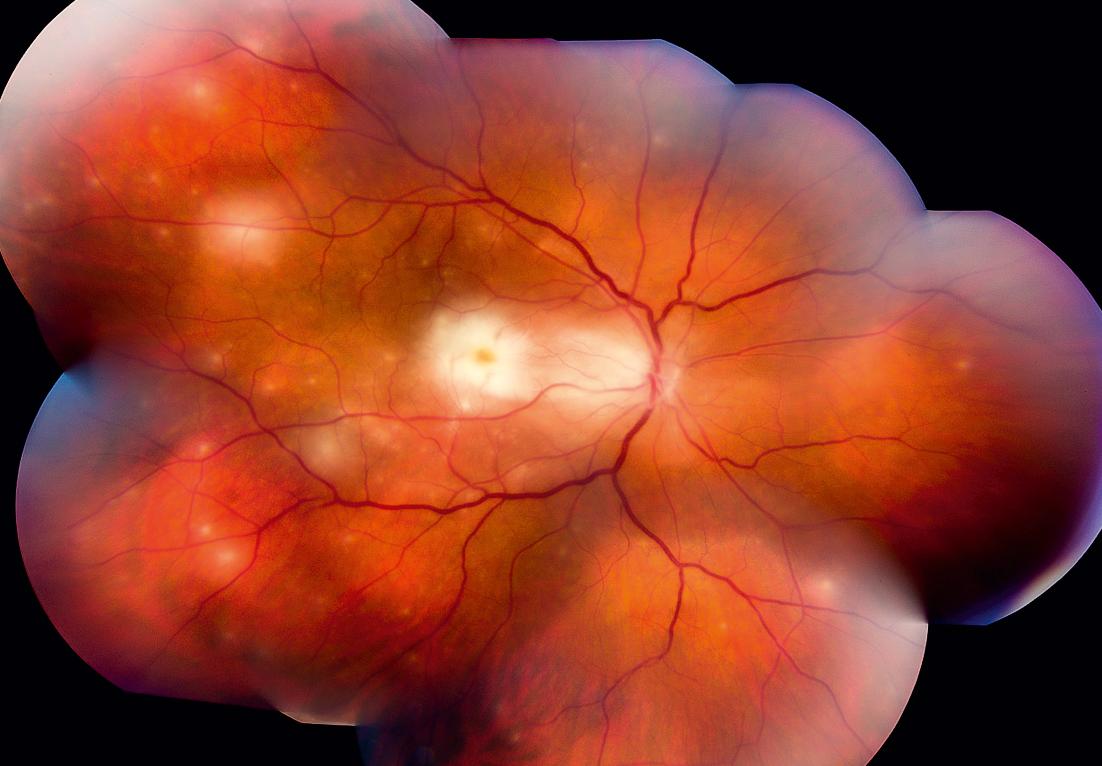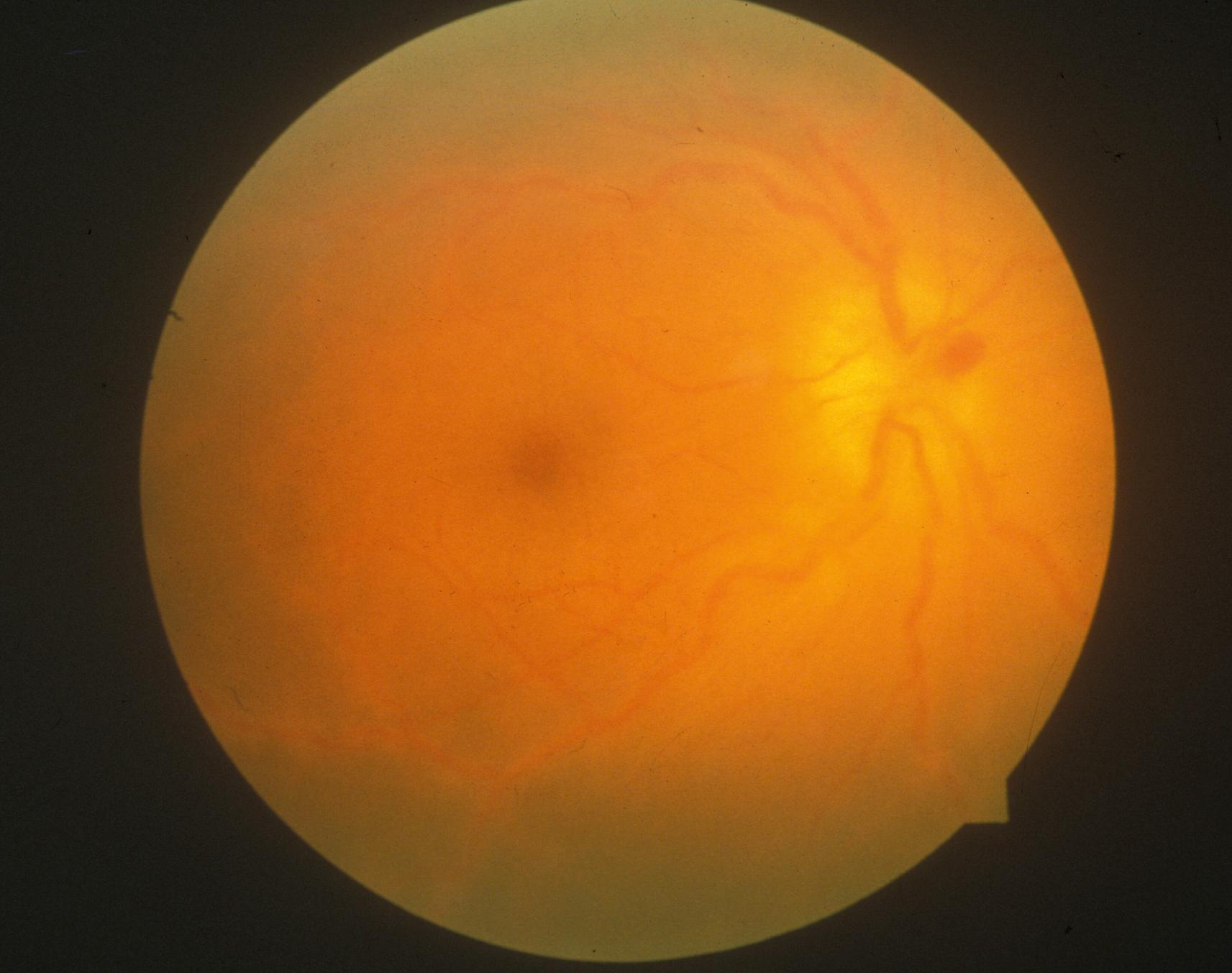Physical Address
304 North Cardinal St.
Dorchester Center, MA 02124
Despite effective antiviral therapies, herpes infection of the eye can lead to severe uveitis with substantial vision loss.
Because acute retinal necrosis (ARN) can often begin as anterior uveitis, examination of the peripheral retina is important in all patients with a new onset of anterior inflammation.
Testing of the aqueous or vitreous humor with polymerase chain reaction (PCR) testing is useful in confirming the diagnosis of ARN; however, treatment should not be delayed waiting for test results.
Initial intravenous or oral antiviral therapy is of benefit in treating ARN; intravenous acyclovir, oral acyclovir, oral valacyclovir, and oral famciclovir have all been used.
The adjunctive use of intravitreal foscarnet may be beneficial for some patients.
Retinal detachment and optic nerve involvement remain important causes of vision loss in patients with ARN.
Progressive outer retinal necrosis (PORN) is thought to be a variant of a necrotizing herpetic retinopathy in immunocompromised patients.
Combination antiretroviral therapy in PORN may improve the prognosis.
Despite many advances in the diagnosis and treatment of ocular diseases, viral infections affecting the eye remain difficult to diagnose and to treat. Many cases of uveitis, including multifocal choroiditis, acute posterior multifocal placoid pigment epitheliopathy (APMPPE), and multiple evanescent white-dot syndrome (MEWDS), are presumed to be caused by viral infections. Nevertheless, antiviral agents rarely are used in their treatment because the evidence supporting the viral etiology is anecdotal. For example, Epstein-Barr virus (EBV) infection has been associated with multifocal choroiditis and panuveitis , ; however, because EBV infection is so ubiquitous, it is difficult to prove a definite causal relationship between the virus and the choroidal disease. Many viral infections associated with uveitis are discussed in the chapter on white-dot syndromes (see Chapter 30 ). This chapter focuses on two disorders predominantly associated with herpes virus infections: acute retinal necrosis and progressive outer retinal necrosis. Other ophthalmic manifestations of herpes simplex virus (HSV) and herpes zoster virus (HZV) infections and other viral infections causing uveitis are discussed in Chapter 14 .
The evolution in our understanding of the etiology and pathophysiology of acute retinal necrosis (ARN) exemplifies how scientific knowledge can improve our ability to accurately diagnose and treat inflammatory eye diseases. ARN was initially described in 1971 in a report by Urayama et al., in which the authors documented the clinical findings in six patients with intraocular inflammation, retinal vascular sheathing, and large white confluent retinal infiltrates in one eye. The disease was called Kirisawa uveitis, and these patients, in whom rhegmatogenous retinal detachments subsequently developed, were left with poor visual acuity. No etiologic agent was identified, and no therapy appeared to affect the outcome of the disease.
Additional cases of retinitis with rhegmatogenous retinal detachment were reported in the late 1970s, , and these retinal detachments were difficult to repair because of both tractional and rhegmatogenous components. Cases of bilateral acute retinal necrosis (BARN) were also described. In 1982, the finding of herpes virus in the retina of patients with ARN by Culbertson et al. paved the way for specific antiviral therapy for the disease. Nevertheless, late retinal detachment remains a serious complication despite the use of prophylactic laser photocoagulation and modern vitreoretinal surgical techniques.
Was ARN a new disease or just a newly recognized one? Few, if any, similar occurrences were reported before 1971, and yet numerous reports on the topic have appeared in the literature since that time. Many investigators believe that ARN is a new disease, possibly caused by mutations in the virus or changes in host susceptibility. Others believe that improved diagnostic techniques and awareness of the disease have led to increased recognition.
Initially reported in Japan, ARN has now been widely found throughout Europe and North America, with sporadic cases occurring around the world. ARN can occur in patients of either gender and at any age, although there may be a slight male preponderance. Although the disease is typically thought to affect young adults, ARN has been reported in children , and in older adults as well. Although ARN was initially described in immunocompetent patients, this disease has now been documented in patients with immunosuppression, such as those with acquired immunodeficiency syndrome (AIDS) , and in patients on immunosuppression or after bone marrow transplantation. A prospective study carried out by the British Ophthalmological Surveillance Unit between September 2007 and October 2008 calculated a minimum incidence of ARN in the United Kingdom to be 0.63 cases per million. Patient age range was 10 to 94 years, and eight patients had a history of herpetic central nervous system (CNS) disease.
The disease may affect one or both eyes; most cases begin with unilateral disease. In almost one-third of cases, the second eye becomes involved, usually within 1 to 6 weeks; however, disease in the second eye has been reported to occur up to 20 years after that in the first eye. , Most patients have a history of pain, redness, floaters, and blurred vision. Anterior uveitis, with or without keratic precipitates, often occurs early in the disease, and although plasmoid aqueous has been described in these patients, hypopyon is rare. Occasionally, there is associated herpes infection at another site, , but most patients are healthy, immunocompetent, and without systemic symptoms.
With the onset of vitritis, patients report floaters and diminished visual acuity. Vitritis tends to worsen as cellular immunity to the virus occurs, and the infiltrating inflammatory cells are predominantly lymphocytes and plasma cells. The earliest retinal lesions are small, patchy, white-yellow areas that tend to become enlarged, increase in number, and coalesce over time ( Fig. 13.1 ). They usually start in the midperiphery; occasionally, they occur in the posterior pole but may not follow the architecture of the retinal vessels ( Fig. 13.2 ). After several weeks, the lesions begin to resolve, with areas of clearing forming a “Swiss cheese” pattern. At this time, perturbation of the retinal pigment epithelium (RPE) also develops. Retinal vasculitis is another manifestation of ARN ( Fig. 13.3 ; also see Case 13.3 ). Patients often have severe retinal arteritis. Capillary nonperfusion can be documented on fluorescein angiography, and periphlebitis and venous occlusions have been described less commonly. Retinal hemorrhage can occur, especially in patients with venous occlusive disease. In contrast to findings with other venous occlusive diseases, neovascularization of the iris or the retina is uncommon but has been reported. , The choroidal vasculature is also involved in this disease, and fluorescein angiography has demonstrated areas of early hypofluorescence and late staining consistent with ischemia-induced inflammatory changes.



Optic neuropathy also occurs in patients with ARN. Disk edema is a common finding early in the course of the disease, and two cases of intraorbital optic nerve enlargement were reported by Sergott et al. Optic nerve involvement should be suspected in patients with an afferent pupillary defect and severe visual loss, with few retinal findings. Visual field testing and color vision assessment can be informative. Visual loss may be caused by vascular occlusive disease, viral infiltration of the nerve, or optic nerve distension. Optic nerve sheath fenestration has been proposed as a possible therapeutic intervention, but its effect has not been proven by well-controlled clinical trials. ARN has also been reported in patients with clinical findings of viral meningitis.
The acute inflammatory disease tends to resolve over several months with or without therapy. In untreated patients, the acute phase usually resolves in 2 to 3 months. The course of the disease can also be predicted by the number of clock hours of initial retinal involvement. Unfortunately, within the next several months, tractional and rhegmatogenous retinal detachments with many large breaks develop in up to 86% of patients. , Despite control of the active viral replication in the retina, cellular infiltration into the vitreous and the formation of vitreal membranes composed of RPE and fibroblasts develop and contribute to the tearing and detachment of an already thinned retina.
The Executive Committee of the American Uveitis Society published a set of standard criteria for the diagnosis of ARN syndrome, stating that the designation of ARN syndrome should be based solely on clinical appearance and the course of infection. Clinical characteristics that must be documented include (1) one or more foci of retinal necrosis with discrete borders in the peripheral retina; (2) rapid progression of disease if antiviral therapy has not been given; (3) circumferential spread of disease; (4) evidence of occlusive vasculopathy with arteriolar involvement; and (5) a prominent inflammatory reaction in the vitreous and anterior chamber. Optic nerve involvement, scleritis, and pain support the diagnosis of ARN, but are not required to make the diagnosis. Macular lesions, although less common, do not preclude a diagnosis of ARN if peripheral lesions are present.
Become a Clinical Tree membership for Full access and enjoy Unlimited articles
If you are a member. Log in here